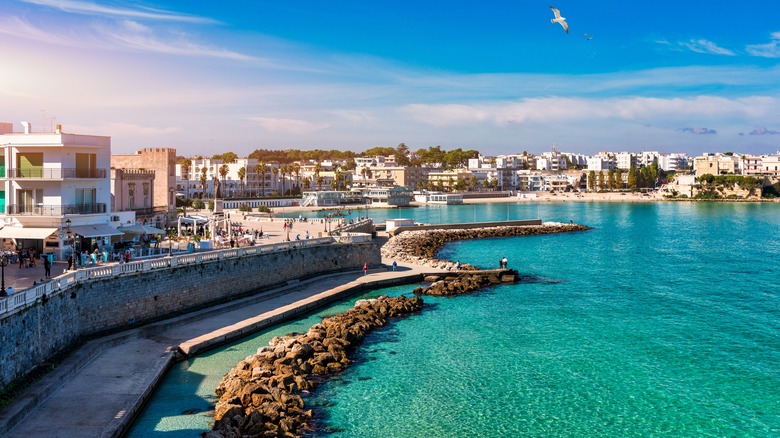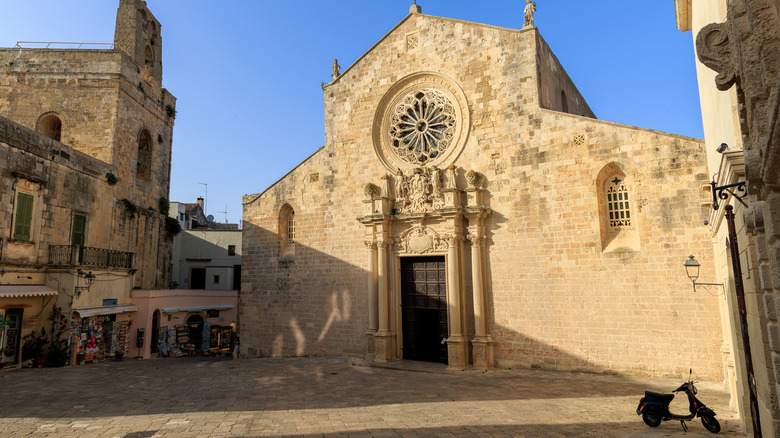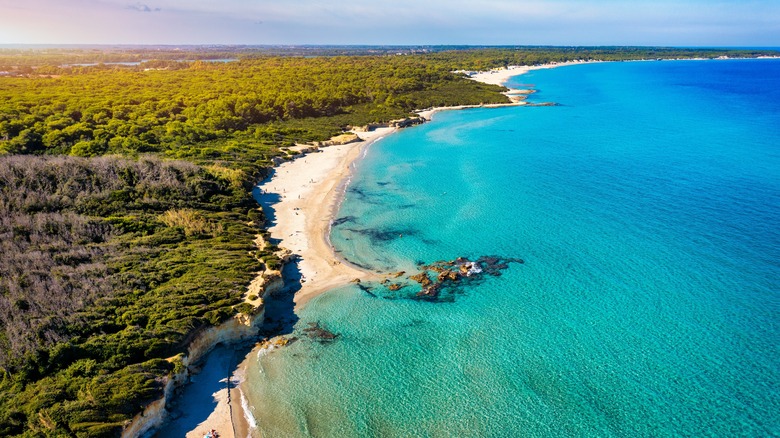This Seaside Gem In Italy Seamlessly Combines Beach Vibes And Historic Charm
Ahh, Italy! This exquisite boot-shaped nation may make it hard for travelers to pick a favorite destination, but the southern region of Puglia should undoubtedly find a way onto your Italian bucket list. Puglia is well known for its prospering olive oil production that goes hand in hand perfectly with its nickname, "The bread basket of Italy." Nestled in the southeastern pocket of Italy is the tiny seaside town of Otranto. The vast photogenic beaches sprawled along the cusp of Otranto might have something to do with the fact that Puglia boasts the longest stretch of coastline of any mainland region in Italy. As an important port town in ancient Greece, Otranto held onto pieces of its Greek heritage up until the 11th century. The town has undergone significant turbulence throughout earlier years, particularly during the Battle of Otranto when its walls were invaded by the Ottoman Empire in 1480.
Despite its small size, Otranto is infused with intricate pieces of history and iconic architectural landmarks, connected by a buzzing labyrinth of cobblestone streets and artisan shops. White-washed façades and ornate Romanesque must-see historic structures contrast beautifully with the sea-green hue of the Adriatic Sea. This charming seaport town was also the setting for Horace Walpole's 1764 Gothic novel, "The Castle of Otranto," as the author was inspired by Otranto and the fortified relic that stands at the center. From the magnificent castle and serene Romanesque cathedral to the picturesque sands that form the outer layer of Otranto, this coastal town in southern Italy is a beautiful beach destination.
Explore the vivacious town of Otranto, Italy
Sun-soaked beaches and aesthetic photo ops aren't the only things Otranto has to offer its visitors. Several pieces of the town's history still remain within the city center, connecting the past and present. Built during the late 15th century and supported by massive stone pillars, the Aragonese Castle of Otranto displays the definition of architectural perfection. Guests can access the interior of the fortress by crossing the "moat" (now a walkway with grass). The thick walls were a crucial piece of protection that defended the city against Turkish invasions.
The Otranto Cathedral is an emblem of Christianity in Otranto. Inside, the chapel houses a captivating religious mosaic that details stories like Noah's ark, as well as mythical and historical depictions. Perched on the easternmost tip of Italy about 3.5 miles from downtown Otranto, the Punta Palascia Lighthouse can be seen rising out in the distance, often circled by gulls and seabirds. The land surrounding this 19th-century lighthouse is isolated and rural, making it one of the most peaceful places in the area.
Surrounded by fiery red walls rising from the dunes, the small, naturally-formed lake known as Cava di Bauxite is one of Otranto's most unique hidden gems. Located just a couple miles outside the main town of Otranto, the deep blue waters of this pool are a special part of this town's culture (though swimming isn't allowed), and the red rocks clustered around the edge are even used by local creatives in their artistic works.
Soak up the southern Italian sun
Otranto boasts a series of captivating sand banks for sun seekers yearning to lay out a beach towel and doze in the warmth. The region of Puglia is a proud holder of 24 Blue Flag beaches. This program was started by the Foundation for Environmental Education, and the title is awarded to sites based on criteria such as sustainability, accessibility, and education. While no beaches in Otranto currently have the blue-flag designation, the region of Puglia added three new blue sites as of this year.
Almost perfectly translucent waters surround the sands of Baia dei Turchi, one of Otranto's prettiest little beaches. This stunning southern European beach received its name after the Turkish landing in Otranto in 1480. Just a few miles north of Otranto, the sand is sheltered by rocky cliffs and lush flora. Beachgoers to this stretch of sand will have full access to beach umbrellas, sun loungers, and a small beach bar. Sharing a close proximity to the shore is the Resort Hotel Baia dei Turchi.
A bit farther north from Baia dei Turchi is another patch of paradise where snow-white sand mixes with dark onyx granules (due to the presence of naturally-occurring iron minerals): Spiaggia Alimini is yet another of Otranto's most popular beaches. Beach bars and sun loungers are ubiquitous on this stretch of sand, thanks to its convenient location next to restaurants, beach shacks, and convenience stores. A short stroll through the towering pines opens up to the expansive sand banks that make up Spiaggia Alimini.


